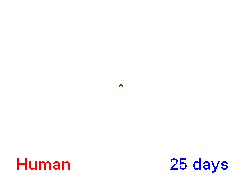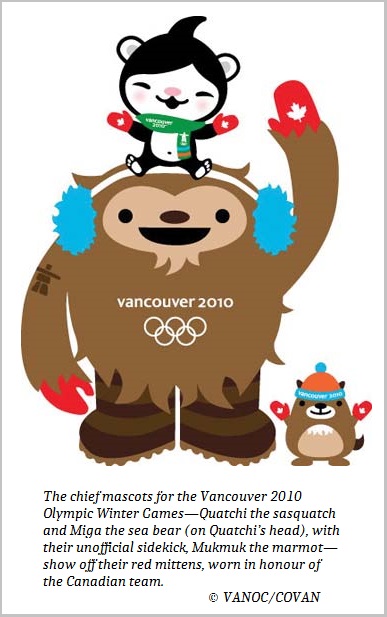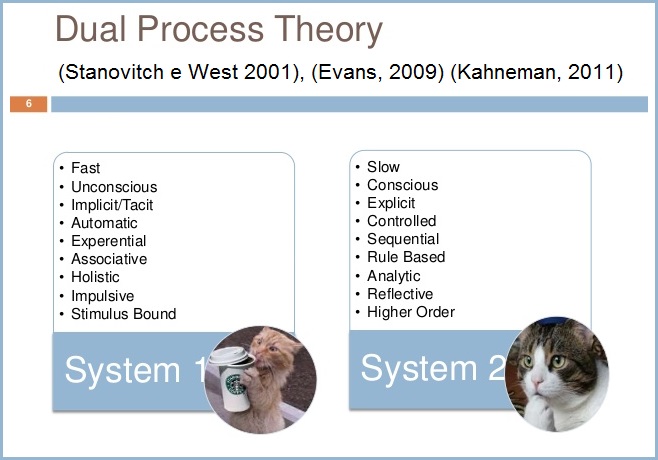page 22
Note: the contents of this page as well as those which precede and follow, must be read as a continuation and/or overlap in order that the continuity about a relationship to/with the dichotomous arrangement of the idea that one could possibly talk seriously about peace from a different perspective as well as the typical dichotomous assignment of Artificial Intelligence (such as the usage of zeros and ones used in computer programming) ... will not be lost (such as war being frequently used to describe an absence of peace and vice-versa). However, if your mind is prone to being distracted by timed or untimed commercialization (such as that seen in various types of American-based television, radio, news media and magazine publishing... not to mention the average classroom which carries over into the everyday workplace), you may be unable to sustain prolonged exposures to divergent ideas about a singular topic without becoming confused, unless the information is provided in a very simplistic manner.
Let's face it, humanity has a lousy definition, accompanying practice, and analysis of peace.
If the reader has come to this singular page by way of serendipity or happenstance, let them be aware that we are discussing the topic of Peace from a different analytical point of view than they may be aware of. Such an analytical view recognizes that Peace often has the value "war" or conflict set next to it, thus producing a two-patterned structure of "peace/war". Since peace efforts throughout history and the globe have not been sustainable, it behooves humanity to reanalyze the situation in order to get a better grasp of why it thinks the way it does as if it is stuck in the mud spinning its wheels. By removing much of the emotional content from the analysis, we hope to ascertain whether there exists underlying repetitive patterns in human brain activity which cause the situation, what influences the formation or maintenance of such presumed pattern(s), and how the incrementally ongoing deterioration of the planet's environment is effecting such thinking. Interestingly however, when we look at the development of the brain, the resulting image gives the impression of a boxing glove, and then imaginatively suggests there is an underlying pugilistic (combatant) influence unless we prefer to put a mitten next to the image, such as that worn by a cook, baker, child in the snow or... as in the following image, those that are worn by 3 Canadian mascots.
 A single image  A dual image |
 A triple image |
(From a sociological perspective looking at various governments throughout the world, the three mascots can well represent the government on top, the rather imposing business sector including the military/industrial complex, and the "unofficial" public... who often sees themselves as the underdog, the outcast, the "fringe", the indentured servant with a little tiny voice.)
In the content of previous pages we entered into the realm of Dual Process Thinking noting its application to economics made by Daniel Kahneman and is described as such in the Britannica as:
Kahneman's research with Amos Tversky on decision making under uncertainty resulted in the formulation of a new branch of economics, "prospect theory", which was the subject of their seminal article Prospect Theory: An Analysis of Decisions Under Risk (1979).
An image of the Dual Process Theory along with an image of the Opponent Processing Theory of color, with the notable difference is that the Dual Process Theory does not account for the tripartition in human biology and thought processes as has already been pointed out by the inclusion of multiple "threes" examples... meaning that the Dual Process Theory it is a primitive concept in need of substantial revision:
 |
 |
Many people have worked on either color perception or the trichromatic color system from which was produced better lenses for telescopes, microscopes, binoculars, etc... For example, from the Britannica we find references to Ernst Abbe, Peter Barlow, Peter Dolland, John Dolland, Chester Moor Hall, (Karl) Ewald (Konstantin) Hering, Young-Hemholtz, etc... (Hering challenged the colour-vision theory of Hermann von Helmholtz, postulating three types of receptors, each capable of a dual response to pairs of colours [yellow–blue, red–green, or black–white].)
One such researcher of more recent vintage is Edwin Herbert Land. While most researchers appear to have worked selectively on the eye and color, the work of land resulted in an appreciation of the brain's involvement. A reference to Land from the Britannica may be of some interest to readers familiar with the old polaroid camera:
(Eward H. Land born May 7, 1909, Bridgeport, Conn., U.S.; died March 1, 1991, Cambridge, Mass. was an) American inventor and physicist whose one-step process for developing and printing photographs culminated in a revolution in photography unparalleled since the advent of roll film. While a student at Harvard University, Land became interested in polarized light, i.e., light in which all rays are aligned in the same plane. He took a leave of absence, and, after intensive study and experimentation, succeeded (1932) in aligning submicroscopic crystals of iodoquinine sulfate and embedding them in a sheet of plastic. The resulting polarizer, for which he envisioned numerous uses and which he dubbed Polaroid J sheet, was a tremendous advance. It allowed the use of almost any size of polarizer and significantly reduced the cost. With George Wheelwright III, a Harvard physics instructor, Land founded the Land-Wheelwright Laboratories, Boston, in 1932. He developed and, in 1936, began to use numerous types of Polaroid material in sunglasses and other optical devices. Polaroid was later used in camera filters and other optical equipment. Land founded the Polaroid Corporation, Cambridge, Mass., in 1937. Four years later he developed a widely used, three-dimensional motion-picture process based on polarized light. During World War II he applied the polarizing principle to various types of military equipment. Land began work on an instantaneous developing film after the war. In 1947 he demonstrated a camera (known as the Polaroid Land Camera) that produced a finished print in 60 seconds. The Land photographic process soon found numerous commercial, military, and scientific applications. Many innovations were made in the following years, including the development of a colour process. Land's Polaroid Land cameras, which were able to produce developed photographs within one minute after the exposure, became some of the most popular cameras in the world. Land's interest in light and colour resulted in a new theory of colour perception. In a series of experiments he revealed certain conflicts in the classical theory of colour perception. He found that the colour perceived is not dependent on the relative amounts of blue, green, and red light entering the eye; he proposed that at least three independent image-forming mechanisms, which he called retinexes, are sensitive to different colours and work in conjunction to indicate the colour seen. Land received more than 500 patents for his innovations in light and plastics. In 1980 he retired as chief executive officer of Polaroid but remained active in the field of light and colour research by working with the Rowland Institute of Science, a nonprofit centre supported by the Rowland Foundation, Inc., a corporation that Land founded in 1960. Under Land's direction, Rowland researchers discovered that perception of light and colour is regulated essentially by the brain, rather than through a spectrum system in the retina of the eye, as was previously believed. Source: "Land, Edwin Herbert." Encyclopædia Britannica Ultimate Reference Suite, 2013. |
For those advocating a "Dual Process" to thinking, it very much appears they prefer to organize all perceptions into a group of two, while strict "three-patterned" theorists organize ideas into threes. If a person's brain is selectively organizing perceptions into groups of two, then groups of three will similarly take on a two-patterned profile such as by altering the labeling thereof. And those with an over-riding interest in a "three" or other numbering scheme, will likewise be inclined to do whatever is necessary in order to render a different pattern into their world-view... such as the traditional "Peace/War (conflict)" dichotomy being assigned a different type of labeling or application in order to give the impression that some imagined improvement to the old duality has been achieved... and thus put into practice... or can be put into practice if only enough people would follow suit in adopting a new way of viewing and thinking about and applying a non-traditionally different orientation to Peace... since presumably "different" perspectives being considered are "differently the same", and thus provide another insight into the cyclicity of human thought processing as a "adaptive rationalization" to deteriorating planetary conditions.
Yet, Long before Kahneman and Tvsersky and others in the 20th Century, there have been "dual process" forms of analysis and models extending into the deep past, such as the previously mentioned I-Ching noted with the Yin/Yang model, and that the following modernized/westernized list gives but a brief recital thereof:
| Yin | Yang |
| Female | Male |
| (Westernized) Pink | (Westernized) Blue |
| Ding | Dong |
| (open) Space | Line (straight) |
| Vagina | Penis |
| Off | On |
| Cold | Hot |
| Wet | Dry |
| Soft | Hard |
| Empty | Full |
| Inside | Outside |
| Back | Front |
| Solid | Open |
| Near | Far |
| Slow | Fast |
| Small | Large |
| Rest | Act |
| Conserve | Spend |
| Confine | Liberate |
| Dark | Light |
| Earth | Heaven |
| Water | Fire |
| Relaxed | Excited |
| Sad | Happy |
| Dense | Diffuse |
| Substance | Energy |
| Gravity | Levity |
| Mystery | Revelation |
| Absorptive | Radiant |
| Concentrative | Expansive |
| Local | Universal |
| Limited | Boundless |
| Positive | Negative |
| Formless | Structured |
| Passive | Active |
However, along with the two-patterned yin/yang, Chinese philosophy has incorporated the "harmony" principle between the two with the Korean mantra of "Unity", to form the Yin-Unity-Yang formula... but irrespective of initial origin of the three-pattern labeling, the idea of finding a sustained "happy medium" is a sought-after goal that is not a concept regularly considered in long-term political investments for humanity; with the word "investments" intentionally used to signify the presence of business being used as a wedge between the phenomena of Peace and War to act as an instigator of dissension in order to create circumstances which will breed profitability for a select few over the many. Hence, the "dual process theory" applied to economics participates in creating conditions for a larger philosophy to be utilized as a system of persuasion to promote ideas to produce a greater income for a selective source, instead of a "Happy Medium" for all of humanity.
For the economist-minded person, the above listed is translated into an advocation dealing with the dichotomies of interest such as loss/gain, in the red/in the black, investment/return, etc... But such dichotomies do not seek to establish a "happy medium". It is either one extreme of the other, with any notion of "happy medium" being relegated to an interpretation of either profit (growth) or stagnation. Like a disease or mental illness, the idea of having peace is in their sense of appropriation, and any privation experienced by another is rationalized through a system of rationality developed in a culture of like-minded people who create multiple levels of buffering that insulate them from experiencing any of the negative effects of their actions. And if they should experience any, they quickly try to retreat from them but feel no sense of loyalty to one's fellow humans unless all eyes are on them with a comparable level of physical protestation which breaks through the barriers of legality and culture which they pay for in order to be excluded from the harsh effects of their self-serving interests.
As part of their argument for enforcing their rationale that everyone must see their way towards agreeing with their "dual process" of thinking as a supportive logic which entitles them to think as they do within the framework of their self-interest, they encourage the populace to accept the notion that everyone has a right to work, thus enabling the business community (backed by the government) to get rid of unions (that can rightly become too political); their push to get everyone to adopt this same philosophy in no way guarantees anyone a right to work... and that everyone should work for a living just like the wealthy claim that they do— except the type of work they ascribe for themselves to do is a dichotomous contrast to that which they ascribe others to do for them. It is a brand of thinking we see in those who involve themselves in some presumptive "peace process", which is but another label for "dual process theory". In other words, it's a joke.
Unlike the "Dual Process Theory" applied to Economics that the Nobel Prize Committee ideologically bought into, the Yin/Yang duality has long been companioned with a tri-partite organizational component:
Three Treasures (San Bao) Correspondences
| Three Treasures:→ | Earth Treasure | Life Treasure | Heaven Treasure |
| Domains of Being | Body | Mind | Spirit |
| In Chinese Medicine | Jing | Qi | Shen |
| Elixir (Dan) | arth Elixir | Heart-Mind | Heaven Elixir |
| (Jing Dan) | (Xin Dan) | (Shen Dan) | |
| Elixir Field (Dan Tian) | Lower Earth | Middle Heart-Mind | Upper Spirit |
| Dearth Field | Heart-Mind Field | Heaven Field | |
| Kind of Qi | Jing Qi | Zhen Qi | Shen Qi |
| Three States | Yin | Harmony | Yang |
| Practice Method | Kungfu | Qigong / Taiji | Alchemy |
| Calisthenics | Mind Focus | Meditation / Stillness | |
| Cultivation Intention | Heal Body | Clear Mind & Emotions | Radiate Spirit |
| Lifestyle Focus | Nutrition, Exercise | Emotional Resolution & Saying No | Spiritual Practice, Meditation |
| Nourishment / Fuel | Food | Qi | Spirit |
| 3 Realms of Dao | Earth | Life | Heaven |
| 3 Buddhist Realms | Earth | Atmosphere | Heaven |
| Transformation Symbol | Caterpillar | Cocoon | Butterfly |
Above tables adapted from:Yang Sheng.com... East-West Perspective: The Three Treasures
Economists like to work from a mindset of opposites as a tool chest with which to make a counter move in a position which may be more profitable than that which another holds. Yet, if publicly pressed, they will go along with the public until such time as they can devise some means of undermining the agreed upon equality in order to firm up a position of inequality in their favor. There is no compromise, there is no middle ground if the odds do not seem to be in their favor... at least for the moment; but they will bide their time like a predator awaiting the opportunity to snare some profitable position and develop a philosophy that they can convince others is to their own well-being such as the old pathetic "trickle down" theory nonsense. The same goes for any application of purposed peace... only because without it, a given moment of non-peace may be less profitable in that their position is seen for what it is... a one-sided venture seeking the upper hand, the higher advantage.
Looking upon the Peace/War dichotomy as a type of economic theory, the usage of war to achieve wealth is like a supply-side brand of economics and the usage of peace is a trickle-down model, since actual peace is a rarity.
Supply-side economics:(Supply-side economics is a) theory that focuses on influencing the supply of labour and goods, using tax cuts and benefit cuts as incentives to work and produce goods. It was expounded by the U.S. economist Arthur Laffer (b. 1940) and implemented by President Ronald Reagan in the 1980s. Supporters point to the economic growth of the 1980s as proof of its efficacy; detractors point to the massive federal deficits and speculation that accompanied that growth.
Source: "Supply-side Economics." Encyclopædia Britannica Ultimate Reference Suite, 2013.In appreciating the notion of "Trickle-down" economics, it may lend the reader a greater appreciation if it is placed into a context such as poverty:
Collective poverty:In contrast to cyclical poverty, which is temporary, widespread or "collective" poverty involves a relatively permanent insufficiency of means to secure basic needs—a condition that may be so general as to describe the average level of life in a society or that may be concentrated in relatively large groups in an otherwise prosperous society. Both generalized and concentrated collective poverty may be transmitted from generation to generation, parents passing their poverty on to their children.
Collective poverty is relatively general and lasting in parts of Asia, the Middle East, most of Africa, and parts of South America and Central America. Life for the bulk of the population in these regions is at a minimal level. Nutritional deficiencies cause disease seldom seen by doctors in the highly developed countries. Low life expectancy, high levels of infant mortality, and poor health characterize life in these societies.
Collective poverty is usually related to economic underdevelopment. The total resources of many developing nations in Africa, Asia, and South and Central America would be insufficient to support the population adequately even if they were equally divided among all of the citizens. Proposed remedies are twofold: (1) expansion of the gross national product (GNP) through improved agriculture or industrialization, or both, and (2) population limitation. Thus far, both population control and induced economic development in many countries have proved difficult, controversial, and at times inconclusive or disappointing in their results.
An increase of the GNP does not necessarily lead to an improved standard of living for the population at large, for a number of reasons. The most important reason is that, in many developing countries, the population grows even faster than the economy does, with no net reduction in poverty as a result. This increased population growth stems primarily from lowered infant mortality rates made possible by improved sanitary and disease-control measures. Unless such lowered rates eventually result in women bearing fewer children, the result is a sharp acceleration in population growth. To reduce birth rates, some developing countries have undertaken nationally administered family-planning programs, with varying results. Many developing nations are also characterized by a long-standing system of unequal distribution of wealth—a system likely to continue despite marked increases in the GNP. Some authorities have observed the tendency for a large portion of any increase to be siphoned off by persons who are already wealthy, while others claim that increases in GNP will always trickle down to the part of the population living at the subsistence level.
Source: "Poverty." Encyclopædia Britannica Ultimate Reference Suite, 2013.Aside from the variations of give and take practiced in economic theories, let us move away from these two currents of energy-like systems and look at two forms of energy supply:
Alternating Current:(abbreviation AC)
(Alternating current refers to the) flow of electric charge that periodically reverses; it starts, say, from zero, grows to a maximum, decreases to zero, reverses, reaches a maximum in the opposite direction, returns again to the original value, and repeats this cycle indefinitely. The interval of time between the attainment of a definite value on two successive cycles is called the period; the number of cycles or periods per second is the frequency, and the maximum value in either direction is the amplitude of the alternating current. Low frequencies, such as 50 and 60 cycles per second (hertz), are used for domestic and commercial power, but alternating currents of frequencies around 100,000,000 cycles per second (100 megahertz) are used in television and of several thousand megahertz in radar or microwave communication. Cellular telephones operate at frequencies of about 1,000 megahertz (1 gigahertz). See also electric current.
Source: "Alternating Current." Encyclopædia Britannica Ultimate Reference Suite, 2013.Direct Current:
(abbreviation Dc)
(Direct current refers to the) flow of electric charge that does not change direction. Direct current is produced by batteries, fuel cells, rectifiers, and generators with commutators. Direct current was supplanted by alternating current (AC) for common commercial power in the late 1880s because it was then uneconomical to transform it to the high voltages needed for long-distance transmission. Techniques that were developed in the 1960s overcame this obstacle, and direct current is now transmitted over very long distances, even though it must ordinarily be converted to alternating current for final distribution. For some uses, such as electroplating, direct current is essential.
Source: "Direct Current." Encyclopædia Britannica Ultimate Reference Suite, 2013.Whereas the two different forms of electrical current were frequently thought of as competitive contrasts, they are now seen as a partnership is many instances. Such is the case for Peace and War... thus having been transformed into an institutionalized form of accepted thought.
Date of Origination: Tuesday, 27-Dec-2016... 04:08 AM
Date of initial posting: Monday, 09-Jan-2016... 11:17 AM
Updated posting: Saturday, 31-March-2018... 11:57 AM